Vietnam, a land of breathtaking beauty and rich cultural heritage, is renowned for its stunning rice terraces that cascade down mountain slopes and stretch across verdant valleys, making them some of the most beautiful rice fields in Vietnam. These picturesque landscapes are not just a testament to the country’s agricultural prowess but also a magnet for travelers seeking natural beauty and tranquility. At YESD, we are dedicated to showcasing the best of Vietnam, and today we take you on a journey to explore the most beautiful rice fields in Vietnam. From the majestic terraces of Sapa to the enchanting paddies of Mu Cang Chai, each destination offers a unique glimpse into the heart of Vietnam’s rural charm. Join us as we uncover the hidden gems and iconic vistas that define the most beautiful rice fields in Vietnam.
Sapa: Northwest Vietnam’s Jewel
Discover the Rice Terraces of Sapa
Located in northern Vietnam, Sapa is ensconced in an area of dramatic rice terraces, frequently shrouded in mist, and is therefore prosaically mystical. The Hmong, Dao, and Tay have grown rice on precipitous hillslopes for generations, and continue to carefully tend to landscape-forming terraces. These rice terraces do not represent an agricultural engineering feat but a cultural heritage that reflects harmonious co-habiting with nature.
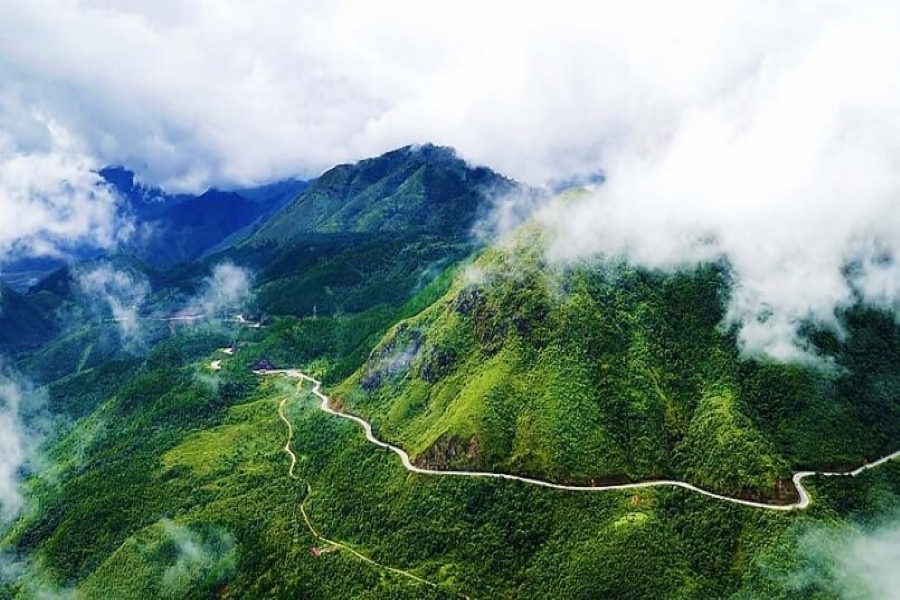
Sapa mountains
The Cultural Significance of Sapa’s Rice Terraces
Cultural Importance in the Building of Sapa’s Rice Terraces indicates how the local ethnic minorities are innovative and hardworking. The terraces are hand curved after several generations converting the steep mountainsides into very green-land fields where most crops can be cultivated.
Some inventions in their farming methods include Hmong, Dao, and Tay people come up with mining farming techniques used in the rough terrain so that every inch in the arable land counts.
Rice cultivation at Sapa involves more than just farming; it is a cultural practice among the families. The terraces always act as accessories during festivals and ceremonies, which their calendar represents life events, and the revolution of seasons is seen. These are the forms that make sure that the traditional knowledge be passed to go down and that community is tightened in harmony.
Best Time to Visit Sapa’s Rice Fields
From September to October: The best time to see the rice fields of Sapa is September and October when the terraced fields are in resplendent golden color, as the rice will be ripened and ready for harvesting. In this charming view of golden fields cascading down mountainsides, offering fabulous beauty, while the weather is cool and pleasant, trekked and photographs are truly appropriate.
From May to June: The destination can also be viewed from May to June, whereby the terraces are full of water in preparation for the planting season. The paddies carry fullness of water that acts like mirrors to reflect the color of the sky and surrounding mountains. The period is often termed the “watering season” and offers some special photographic moments at the start of the rice-growing cycle.
The Unique Beauty of Sapa’s Terraces
The terraces of Sapa stand out from the others in form and texture. This is because the terraces in Sapa are uniquely defined by steep gradients and intricate arrangements. The terraces twine along mountains in an intricate mosaic of green and gold, changing with the seasons.
What is beautiful about these terraces is the fact of their ever-changing nature. By spring, it would be so full of young rice, this sea of green reaching far and wide; by summer, it would be full and lush. In autumn, the golden hue of ripening rice would dominate the landscape; in winter, the terraces lie under occasional frosts and mists.
Villages and Cultures of Sapa
Visiting different rice terraces also involves an added interaction with the surrounding villages and cultures of different regional ethnic minorities. Each village has its own unique customs, traditional costumes, and customs of living. This trek kind of shows the life that has almost remained untouched by modernity.
Ta Van Village: This village is home to the Zay people. It is at the top of the lists of the most visited places by tourists. It provides various accommodation options in the forms of homestays, which allow visitors to get the local life experience by working on daily activities and tasting local foods.
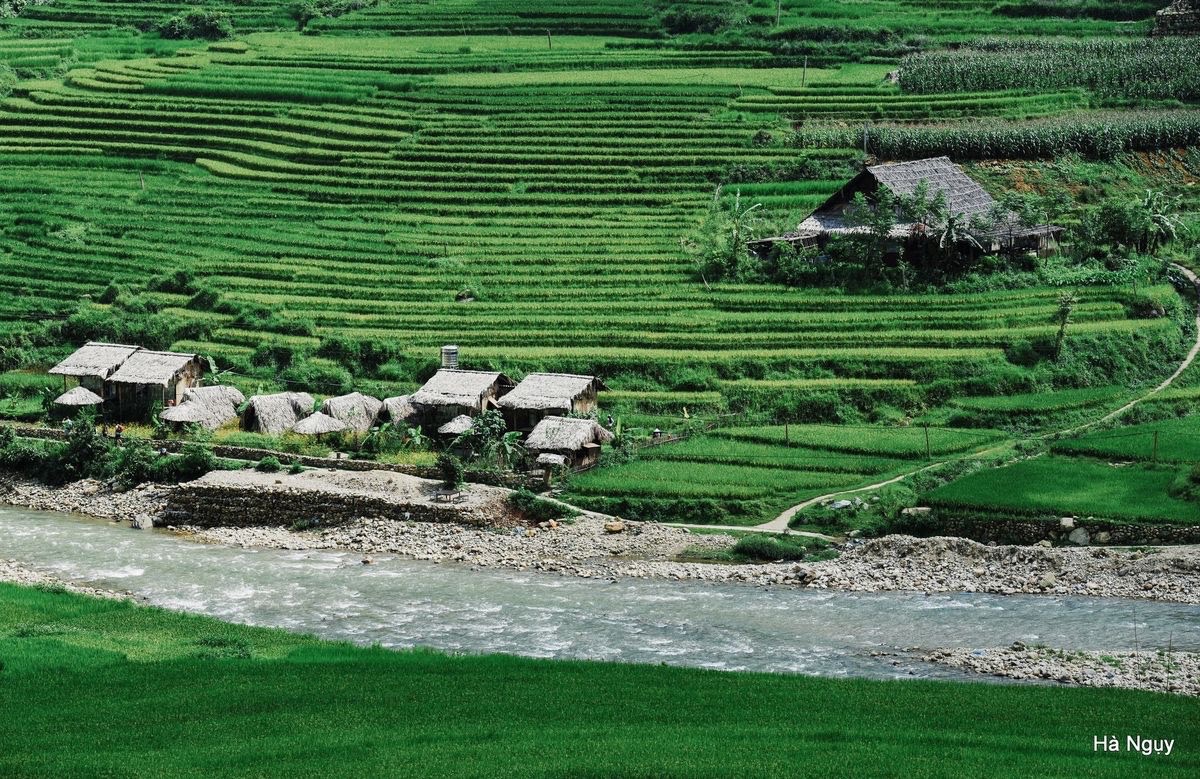
Rice Fields in Sapa
Cat Cat Village: It sits just near the Sapa town, and Hmong inhabit Cat Cat. This is the beautiful village that everyone loves, and guests really love tradition-based handicraft village. Here, visitors can witness many traditional techniques of making textiles and jewelry.

Cat Cat Village
Lao Chai Village: This village belongs to Hmong minority, showcasing the stunning beauty of the terraces and explaining how people traditionally farm the land. People are known for being very hospitable with rich cultures.
Mu Cang Chai: A Paradise for Photographers
Mu Cang Chai: The Enchanting Beauty
Located in the Yen Bai province of northern Vietnam stands Mu Cang Chai, a hidden treasure on earth well known globally for its mesmerizing rice terraces that flow down the bends of the Hoang Lien Son mountain range. This picture-perfect region offers a different and real Vietnamese experience, far from the noise of mass-crowding in more famous tourists’ destinations. Relative isolation and difficult landscape help to make the area less crowded, therefore ideal for getting away from it all in search of serenity and pristine beauty.
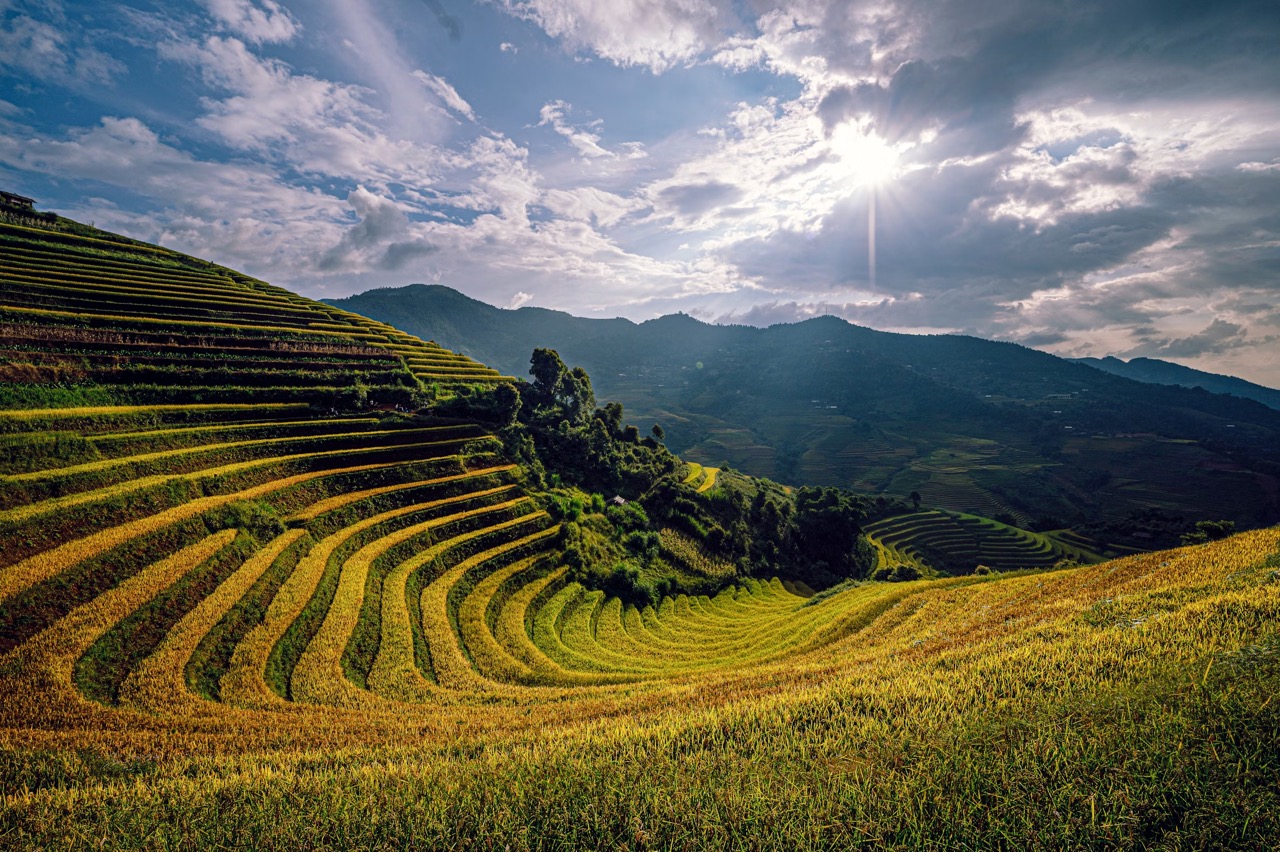
Rice Terraces of Mu Cang Chai
The rice terraces of Mu Cang Chai are both a marvel of engineering and a testament to the ingenuity of local ethnic communities, particularly the H’mong people. The steep hillsides have been carved into an intricate patchwork of green and gold, like the seasons. During planting time, the terraces are like immense mirrors reflecting the sky. At harvest time, mature rice forms waves of gold across these fields. This dynamic landscape has all of a photographer’s paradise written all over it and is, itself, an eternal welcoming font of inspiration to artists and nature lovers combined.
Cultural Insights and Local Communties
Besides the breathtakingly beautiful landscapes, there was an opportunity to soak up the rich cultural heritage of the Hmong people in Mu Cang Chai. The ethnic minority group seems to have inhabited this land for centuries and hence developed a personalized way of life, teamed with the land. Traditionally, brightly clad in traditional clothing and enigmatic self-made embroidery, the Hmong Community is equally famous for their ancient methods of agriculture handed down generation after generation.
One can visit the local communities in Mu Cang Chai to get a better understanding of their life and culture. Most locals show great hospitality and easily share their habits with visitors. Visitors get the opportunity to join a local family in the field to try rice planning or rice harvesting during homestay activities. It builds a deeper appreciation not only for the labor-intensive process involved in growing rice but also for developing a connection with the people that call Mu Cang Chai home.
Other than the farm activities, one can visit the markets, which are full of handmade handicrafts, by artisans of the Hmong community, elaborating on garments, jewelry, and traditional instruments. The markets are an overflow of colorful energy, allowing the traveler to understand a little more about the social fabric of this community. It helps the preservation of traditional crafts and creation of local livelihood opportunities whenever travelers buy such handmade items.
Trekking Adventures in Mu Cang Chai
For trekking enthusiasts, the rugged landscape of Mu Cang Chai provides ample trails leading through dense forests, across fields with stepped terracing, and up to viewpoints with panoramic views. The treks are an excellent opportunity for anybody to explore the region’s beauty amidst nature while stumbling upon remote villages and warm hospitality from locals. Popular trekking routes include those to La Pan Tan, Che Cu Nha, and De Xu Phinh. Each of them gives a different view for the scenery.
Best Time to Visit Mu Cang Chai
The best time to view this Mu Cang Chai is in May and June during the rice planting season or later in September and October during harvest. This forms the most vibrant colors of the terracing landscapes, reflecting either the clear blue sky in the open from above during the day or golden with the ripe rice glow towards evening. In terms of weather, it is also relatively mild against open-air activities like trekking and photographing.
Accommodation in Mu Cang Chai
While being a countryside district, Mu Cang Chai still offers quite a few different types of accommodation for visitors. It is highly popular to have a homestay since it ideally creates an authentic living experience with locals. Many families of the Hmong open their houses to travelers, offering comfortable overnight stays with delicious food and expected hospitality. For those wanting more modern facilities, there are also a few guesthouses or eco-lodges.
Local Cuisine and Fine Dining experiences
The foods of Mu Cang Chai also reflect its cultural diversity and rich agriculture. Local ingredients from the fields and forests are used to cook many local dishes. Frequently recommended traditional food includes “thang co” – traditional Hmong stew, sticky rice with grilled pork, rice cakes (of several kinds), etc. Joining local residents’ meals or visiting village fairs full of food stalls is recommended in order to taste such localintree flavors.
Ha Giang: The Untamed Beauty of Northern Vietnam
Ha Giang Terraces
Located in Ha Giang, known as the “final frontier” of Vietnam, it gives an absolutely unique experience amidst nature’s violence and cultural richness. This area hosts some of the country’s most beautiful rice fields in Vietnam, and some of the most secluded too. Intricate carvings into the hillsides, the terraces wove a tapestry of green that did its best to blend with the hues of the seasons—from the young green of new rice shoots in spring to the golden waves of harvest time. Let alone, these vistas unfolded against a backdrop of rugged limestone peaks dramatically reaching up toward the sky, lending the visitor a feel of awe and adventure.
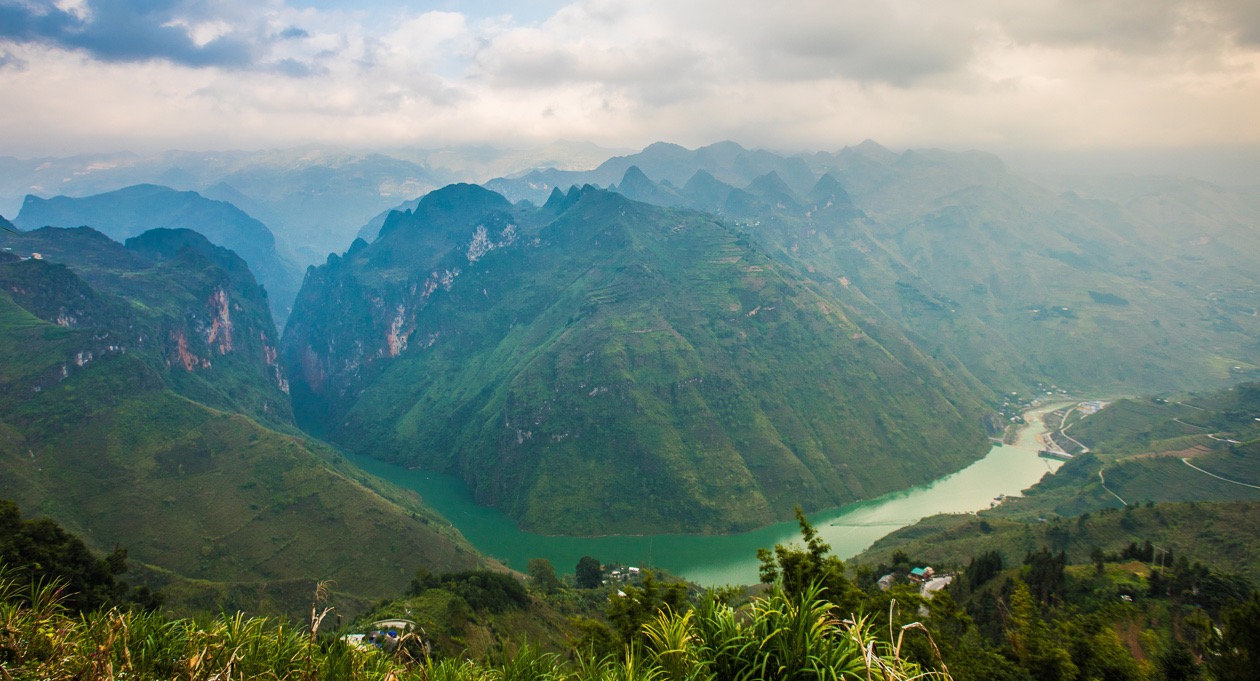
Nho Que River
Off-the-Beaten-Path Exploration
By motorbike, exploring the rice terraces of Ha Giang will be the best way for people opting for a pure and authentic adventure. Mountain-type ways give a full windy road with which one can reach secluded spots and see panoramic views. Every turn in that road brings a different view of the land: the amazing scene of fields spread out in intricate patterns testifies to generations of ingenuity and hard work by local farmers.
Encounters with Ethnic Minorities
One will encounter a vibrant tapestry of cultures while traveling through this rugged landscape. Ha Giang is inhabited by a great variety of ethnic minorities: the Hmong, Tay, and Dao people. All these communities have been living here for centuries in harmony with nature and maintaining their traditions in clothes, houses, and farming habits. These communities are a great window to the ember of life that integrates them and gives a more profound understanding with regard to the cultural mosaic of Vietnam.
Cultural Immersion and Unique Experiences
Getting to know the locals is part of the great experiences during a visit to Ha Giang. You will be hosted by villages of ethnic minorities, and you have the opportunity to experience their hospitality firsthand. You may learn traditional crafts, taste local food, or maybe even participate in festivals or ceremonies. Such experiences will give you values regarding what life actually is like for these people who dwell in this remote area.
Awe-Inspiring Landscapes
Ha Giang boasts extremely breathtaking landscapes. The terraced fields are a wonder of farming engineering since they were intended to harness the little available arable land in this mountainous region. Other natural wonders include the Ma Pi Leng Pass, often called the “King of Passes” in Vietnam. Nonetheless, the views offered by this pass are some of the most dramatic, with steep cliffs and deep valleys that offer feelings of vastness and solitude.
A Destination for the Adventurous
Ha Giang promises to mesmerize adventurers and nature lovers. Whether by walking along the steps of the terraces, biking through the mountainous roads, or just enjoying the view of the scene, the spirit of discovery and the beauty of the landscape are unforgettable. The remoteness has also spared it from mass tourism, making for a much more peaceful and personal experience.
Ninh Binh: Ha Long Bay on Land
Unique Landscapes of Ninh Binh: The Limestone Karsts
One of the most distinct features of Ninh Binh is its limestone karsts. These geological formations rise abruptly from the rice fields, forming dramatic and stunning contrasts. The karsts are ancient coral reefs created over 200 million years ago. Through erosion and weathering over time, these formations were carved out to depict what they are, which is one of the wonders of geology.
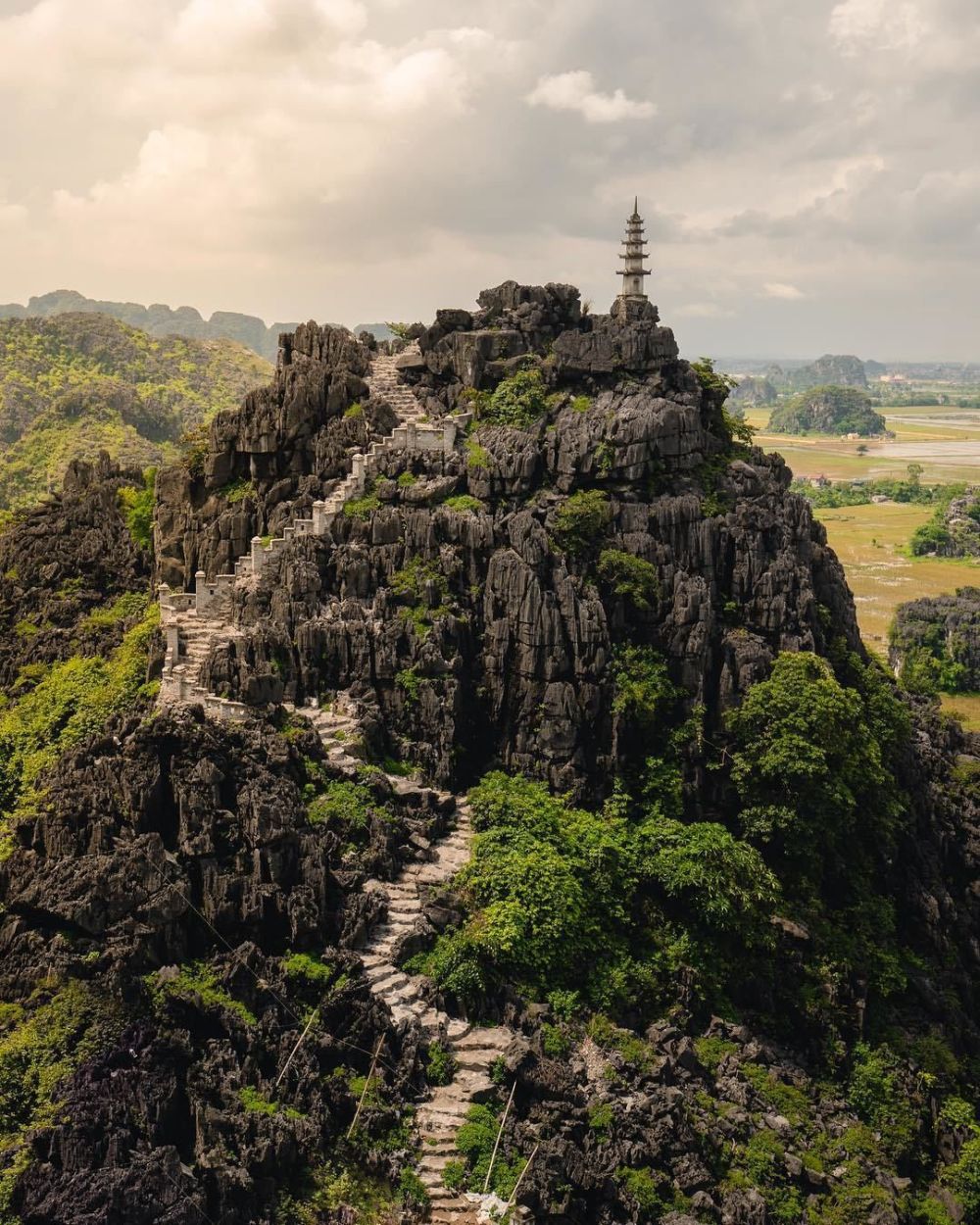
Mua Cave
The Flat Rice Paddies
Unlike the terraced rice fields of places such as Sapa, rice paddies in Ninh Binh are large and flat. The apparent flatness of the fields is due to Ninh Binh’s geographical position in the Red River Delta, famous for its rich and even land. Fields appear stretching on forever, giving one vision after vision of pure green.
By Boat Exploration
Boat Rides Through Tam Coc and Trang An
Other means of enjoying the rice fields in Ninh Binh include boat rides through Tam Coc or Trang An. They offer a unique view of the area’s beauty.
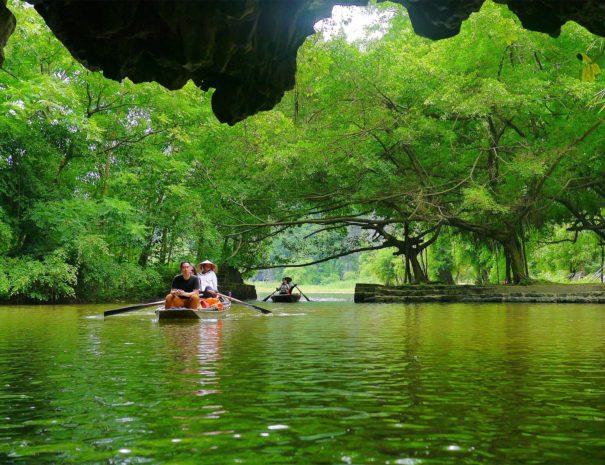
Tam Coc Boat Ride
Tam Coc Boat Ride
One of the most popular tourist activities in Tam Coc is this boat ride. “Tam Coc” literally means “Three Caves,” which refers to the three natural caves developed from the river called Ngo Dong that one will pass through while taking this boat trip. While gliding down the river, there are towering limestone cliffs and big rice paddies on either side. The water’s serenity reflects what is above it, hence looking like a mirror and enhancing such beauty.
Trang An Boat Ride
Another great way to experience Ninh Binh is by taking a Trang An boat ride. This UNESCO Heritage Site has an even more comprehensive set of waterways and caves. The boat ride will take you through a series of caves and grottos that each has its unique charm. Temples and pagodas dot the Trang An landscape, offering a cultural element to this boat journey.
Passing Through Caves
During the cruise, you will be taken to see some caves. Each has its own different moments from others. These caves were formed through millions of years by water asymptomatic erosion of limestone. Entering the caves you will feel a chill in the air and the sound of dripping from the ceiling. The boat moves noiselessly across the darkness, and when one emerges at the far end of the cave, one is greeted by radiant sunlight, with beautiful rice paddy fields and a karsts landscape in front of one.
Towering Cliffs and Lush Rice Fields
Towering limestone cliffs ringing these rice fields make the view a spectacular one. These cliffs plunge dramatically upward from the plain, creating an excellent contrast. The verdant rice fields, set either side of the river, create a sea of green—more brilliant in hue during the growing season. The combination of towering cliffs and large expanses of rice paddies creates a panoramic view that is breathtaking and a feast for the eyes. It is easy to see why Ninh Binh is home to some of the most beautiful rice fields in Vietnam, as the interplay between the natural and cultivated landscapes forms a mesmerizing tableau.
Terraced Fields of Hoang Su Phi
The Hidden Gem of Hoang Su Phi
Located in one of the remotest and most picturesque provinces, Ha Giang, Hoang Su Phi itself is a hidden gem, not in the present radar of most tourists. Yet, it boasts some of the views that are just spectacular—rice terraces and less crowded compared with all of Vietnam. The Hoang Su Phi terraced fields have been built up over many centuries through local ethnic groups’ endless toiling and striving, mainly the La Chi, Dao, and Nung people. These rice terraces are not only agricultural but also cultural and historical landscapes that describe a mixture of ingenuity and perseverance of the communities concerned.
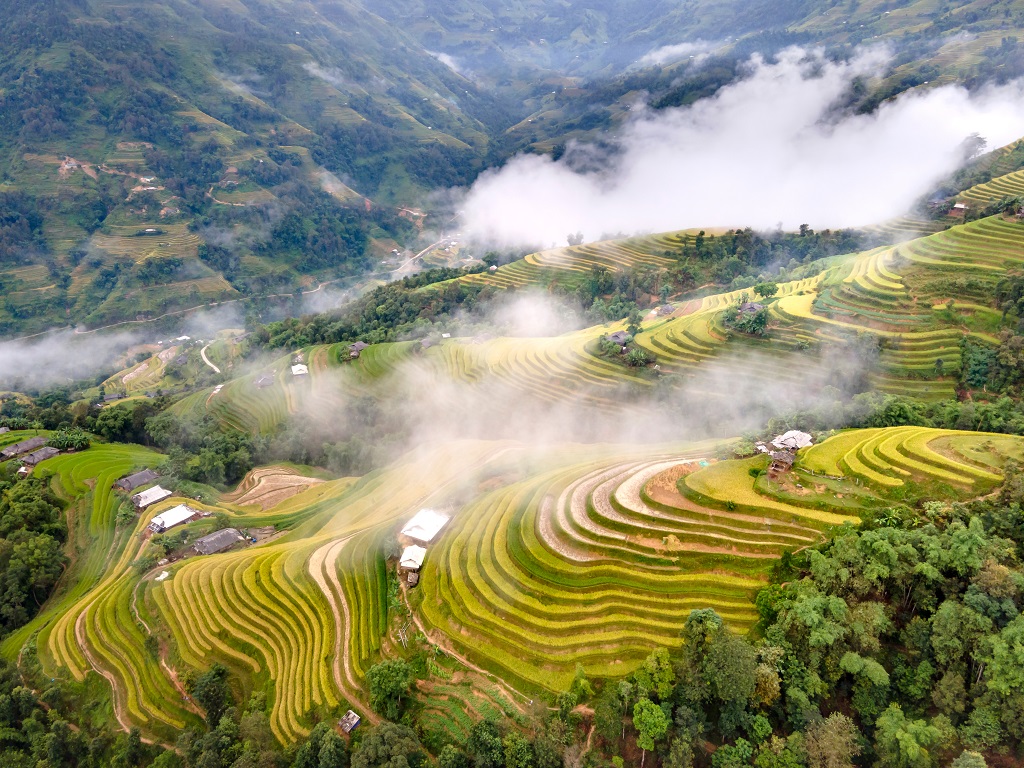
Rice Fields in Hoang Su Phi
Well, the way itself to Hoang Su Phi is an adventure. The winding mountain roads offer panoramic views of emerald valleys and towering peaks that make this off-the-beaten-path destination hold in tourists’ minds an experience away from the crowds at more famous places. Be it at cultivation time—May—or at harvest time in September, the colors bursting forth and serenity will abide in your memories of Hoang Su Phi.
Experience Authentic Culture
Located in Ha Giang province, Hoang Su Phi is one of the finest places through which one can get the actual taste of a country village in Vietnam. Staying with local families at their homestays is one of the most enriching experiences one gets while visiting Hoang Su Phi. These homestays represent the reality of how ethnic minority communities inhabiting this region live day in and day out. Guests are warmly welcomed and introduced to some traditional activity, which forms an essential part of the local way of life.
This is an experience highlighted for most visitors: farm activities. Depending on the time of the year, you may find yourself planting rice seedlings, harvesting crops, or doing any other farmwork. This close interaction will not only leave you informed but also attached to the land and to those people who have tilled it through generations.
Special to the destination of Hoang Su Phi are the warm receptions by the ethnic minority communities. The La Chi, Dao, and Nung people are known for being friendly hosts. All too often, visitors leave behind memories of stunning landscapes, but also with stories of shared meals, conversations, and cultural exchanges. The cultural experience is further enhanced with the local cuisine, including very unique dishes prepared with fresh and local ingredients.
Beyond the rice terraces, there are many other attractions located in Hoang Su Phi District, traditional festivals, vibrant local markets, and scenic routes used for trekking. All this gives one a deeper insight into the rich culture and beauty of nature in the area. Hoang Su Phi offers visitors a chance to explore some of the most beautiful rice fields in Vietnam. These terraced fields are not only a testament to the region’s agricultural heritage but also a symbol of the harmonious relationship between the people and their environment. The intricate patterns of the terraces, carved into the hillsides, create a stunning visual spectacle that changes with the seasons. From the lush green of the early planting season to the golden hues of the harvest time, the rice fields of Hoang Su Phi are a photographer’s dream and a traveler’s delight.
Conclusion
The most beautiful rice fields in Vietnam represent more than agricultural achievements; they are cultural landscapes depicting the history and strength derived from the country’s people. From the misty mountains of Sapa to the limestone karsts of Ninh Binh, each region offers a unique perspective on the beauty of Vietnam’s rice terraces. YESD invites you on a journey to experience these magnificent landscapes and the rich cultural heritage they embody.FAQ
- Where are the most beautiful rice fields in Vietnam?
The most beautiful rice fields in Vietnam are located in Sapa, Mu Cang Chai, Ha Giang, Ninh Binh, and Hoang Su Phi areas.
- When should I visit the rice fields in Vietnam?
Usually, it is best to go during harvest time from September to October or during June when flooding happens.
- Is it possible for me to interact with local communities there?
Most areas will enable you to be in contact with the local ethnic minority groups and understand their traditional farming habits.
- How can I explore the rice fields in Ha Giang?
Motorbike exploration is very popular as it gives one the freedom to move on winding roads and reach secluded spots to enjoy panoramic views.
- What makes Ninh Binh’s rice fields unique?
The rice fields of Ninh Binh lie amidst dramatic limestone karsts, making up a great landscape often referred to as the “Halong Bay on land.”
- Are there any homestays available in these areas?
Yes, most areas, like Hoang Su Phi, offer homestay facilities where guests would be accommodated by local families and live the life of rural Vietnamese people.
